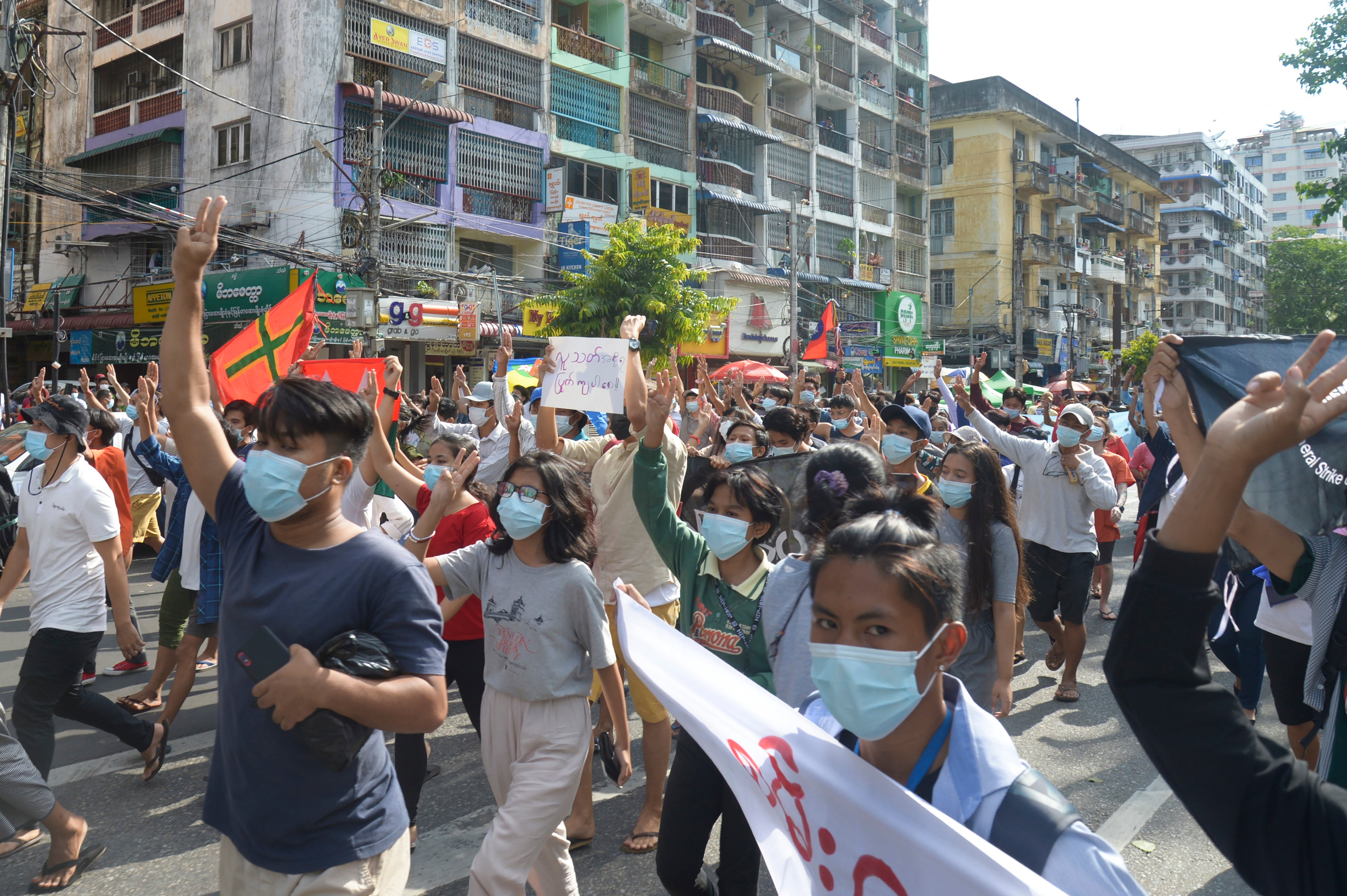Flash mobs in Myanmar's biggest city avoid deadly response
A flash mob of mostly young people in Myanmar’s biggest city have staged a brief protest march against military rule, the latest in a series of actions aimed at reducing the chances of a deadly response by the authorities

Your support helps us to tell the story
From reproductive rights to climate change to Big Tech, The Independent is on the ground when the story is developing. Whether it's investigating the financials of Elon Musk's pro-Trump PAC or producing our latest documentary, 'The A Word', which shines a light on the American women fighting for reproductive rights, we know how important it is to parse out the facts from the messaging.
At such a critical moment in US history, we need reporters on the ground. Your donation allows us to keep sending journalists to speak to both sides of the story.
The Independent is trusted by Americans across the entire political spectrum. And unlike many other quality news outlets, we choose not to lock Americans out of our reporting and analysis with paywalls. We believe quality journalism should be available to everyone, paid for by those who can afford it.
Your support makes all the difference.A flash mob of mostly young people in Myanmar’s biggest city staged a brief protest march Thursday against military rule, the latest in a series of actions aimed at reducing the chances of a deadly response by the authorities.
In the five-minute protest in Yangon about 70 marchers chanted slogans in support of the civil disobedience movement that opposes February’s army coup that ousted the elected government of Aung San Suu Kyi They then scattered into the downtown crowds.
Protests also took place in other cities and towns including Mandalay, the country’s second biggest city, where Buddhist monks marched, and Dawei in the southeast, where the demonstrators included engineers, teachers, university students and members of LGBT groups.
In Yangon in particular, small protests publicized by word of mouth have become popular. They contrast with weeks of confrontations in which security forces increasingly used lethal force, with some militant protesters responding with homemade weapons such as gasoline bombs in self-defense.
In other areas, mass peaceful protests still are being broken up by force, while in some remote areas, groups opposed to the ruling junta have occasionally ambushed security forces, leading to bloody clashes.
According to the Assistance Association for Political Prisoners, which compiles details of arrests and fatalities linked to the junta’s crackdown, 769 protesters and bystanders have been killed since February’s military takeover. The junta has said the death toll is about one-third of that, and that the use of lethal force was justified to end what it called rioting.
After the military government began using lethal force to suppress demonstrations, protesters in some towns and neighborhoods began organizing themselves into home-grown militias or defense groups.
On Wednesday, the anti-military shadow government formed by elected lawmakers who were barred from taking office by the military announced a plan to unify these local groups into a national “People’s Defense Force” which would serve as a precursor to a “Federal Union Army” of democratic forces including ethnic minorities.
The plan was announced by Khin Ma Ma Myo, deputy defense minister of the shadow National Unity Government, which challenges the junta’s legitimacy. She said one of the duties of the People’s Defense Force is to protect the country’s resistance movement from military attacks and violence instigated by the junta.
The National Unity Government has the backing of several major ethnic minority groups who for decades have been seeking greater autonomy and who maintain their own guerrilla forces. The two most important are the Kachin in the north and the Karen in the east, both of which are actively engaged in combat with the government’s military forces.
Pado Man Man, a spokesman for the 5th Brigade of the Karen National Union, said he believes that the formation of the People’s Defense Army will be a step toward a future state that includes all ethnic armed groups.
“The emergence of the People’s Defense Army is even a little bit late. We have the same direction and purpose. We are now cooperating,” he said.
Since the military's seizure of power and crackdown on opponents, students and factory workers have fled to territory controlled by the ethnic guerrilla forces to take military training.